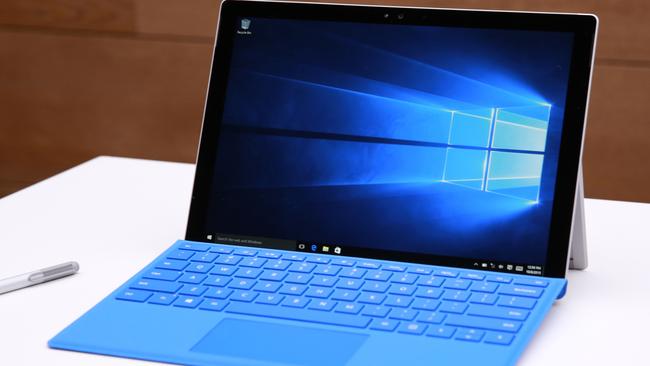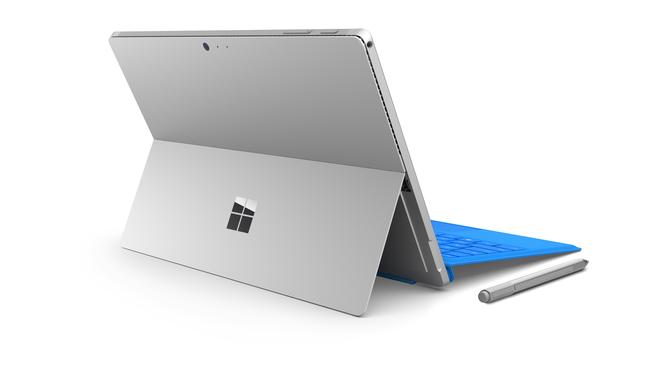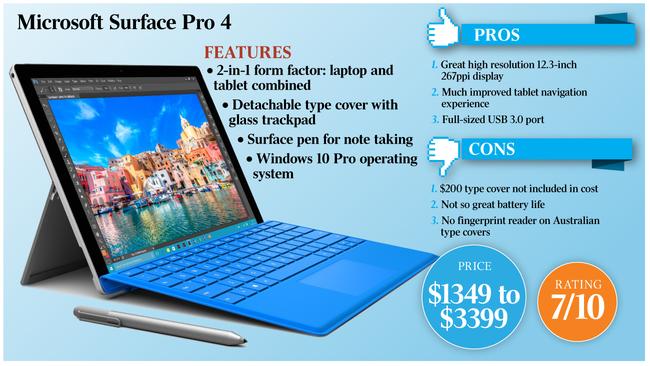Review: Microsoft Surface Pro 4 a welcome addition
The biggest asset of Microsoft’s Surface Pro 4 is its improved user experience, including facial recognition.
It’s hard to miss the steady rise of Microsoft’s two-in-one Surface Pro range and the Surface Pro 4 strives to give you the best of both worlds. Attach the keyboard and it’s a laptop, without it you have a decent, albeit expensive, tablet that runs your favourite Windows programs.
The Pro 4’s biggest asset is the improved user experience, which begins when you switch it on and encounter Windows Hello. It uses face recognition to log you in and in a split second you have access to the tiled interface. It’s quite liberating not to have to log in with a password.
Hardware wise, the Pro 4 improves on its predecessor without reinventing the wheel. It’s still encased in magnesium and still silver coloured but it’s much thinner and lighter. The bezel has been cut back to deliver more screen real estate as well: 12.3 inches instead of 12 inches. The 3:2 aspect ratio has been retained so it’s wide in landscape mode.
Screen resolution is also better at 267 pixels per inch (216 ppi with Pro 3) and with five million pixels to play with the Pro 4 delivers a great viewing experience.
The other big change is the keyboard — or touch cover as Microsoft calls it. Keys offer more travel and you get a better typing experience, although not as good as a desktop keyboard. The touchpad is glass and bigger so swiping is smoother.
In the US, touch covers have a fingerprint reader but these are missing on Australian keyboards, Microsoft says they will be made available over time. Obviously some batches of the new keyboards were made without the fingerprint reader.

Meanwhile, the Surface Pro pen has also received a touch-up, with 1024 levels of pressure sensitivity instead of 256. The pen responds to pressure promptly and there’s very little latency.
Apart from being an eraser when upside down, the top of the pen also triggers other functions. A long press brings up a search box, a single click actions One Note and a double-click takes a screenshot.
You can hang the pen on either side of the Surface tablet, that includes when the charger is connector occupies the opposite side.
Then there’s the benefit of the Windows 10 Pro operating system that lifts the experience, especially with tablet navigation. You can access apps from the tile interface but also select any app or installed program from a scrollable column on the left-hand side. This is especially useful in tablet mode. You click the icon just above the Windows symbol to make the column visible.
Swipe from the right and you have the action centre with tips, mail and, below that, access to settings
One signature feature on the Pro 4 is its full-sized USB 3.0 port. You can plug in a flash drive or external HDD without mucking around with adaptors, a big plus. There’s also a Mini DisplayPort and microSD card reader.
Finally there’s the multi-position kickstand. Lots of folks rave about the kickstand and the stability it offers the tablet, but I am not a fan. Supporting a Surface on your lap is uncomfortable and I can’t pick up the unit by the display and take it away, as I can a regular laptop.

I’m used to having to rest a laptop on the edge of a ledge at a crowded media conference and again, a Surface with its multiple parts isn’t so useful. That means I’m more likely to be a fan of the upcoming Surface Book which addresses these issues. It’s horses for courses.
Overall the Pro 4 operated smoothly during testing although I had issues using the standard Movies player. However, video played fine with the VLC app and while some users have reported flickering screens, freezes and pinkish and reddish tinges on the display, I saw no evidence of this.
The Pro 4 uses sixth-generation Intel Skylake processors. You can select Core i5, Core i7 or Core M5, the middle-rated processor in the energy efficient Core M range. The Core M5 model is slightly lighter. You can have 4GB, 8GB or 16GB of RAM and from 128GB to 1 Terabyte of storage. The device has 8 and 5-megapixel back and front-facing cameras.
The device uses on-board graphics, which the Cinebench 15 benchmark rated at 35.98 frames per second. If you need higher-end graphics you would go for the Surface Book with a dedicated graphics card.
Unfortunately, battery life on the Pro 4 isn’t great; at 75 per cent brightness, the Pro 4 played back video for just under five hours. That’s disappointing given the price tag of the device in Australia.
You’ll pay anywhere between $1349 and $3399 for the Pro 4 and there’s another $199.95 for a type cover in black, blue or red. The Surface Pen is included in the Pro’s price, but if you want to buy it separately it costs $94.95, which includes a pen tip kit.
The new Surface dock costs $299.95 and Microsoft says it is compatible with Pro 3.
Overall the Surface Pro 4 is a great tablet with an exceptionally clear screen, that morphs into a useful laptop with a type cover attached. It’s Microsoft’s best Surface Pro device yet.
Rating: 7/10
Price: $1349 to $3399



